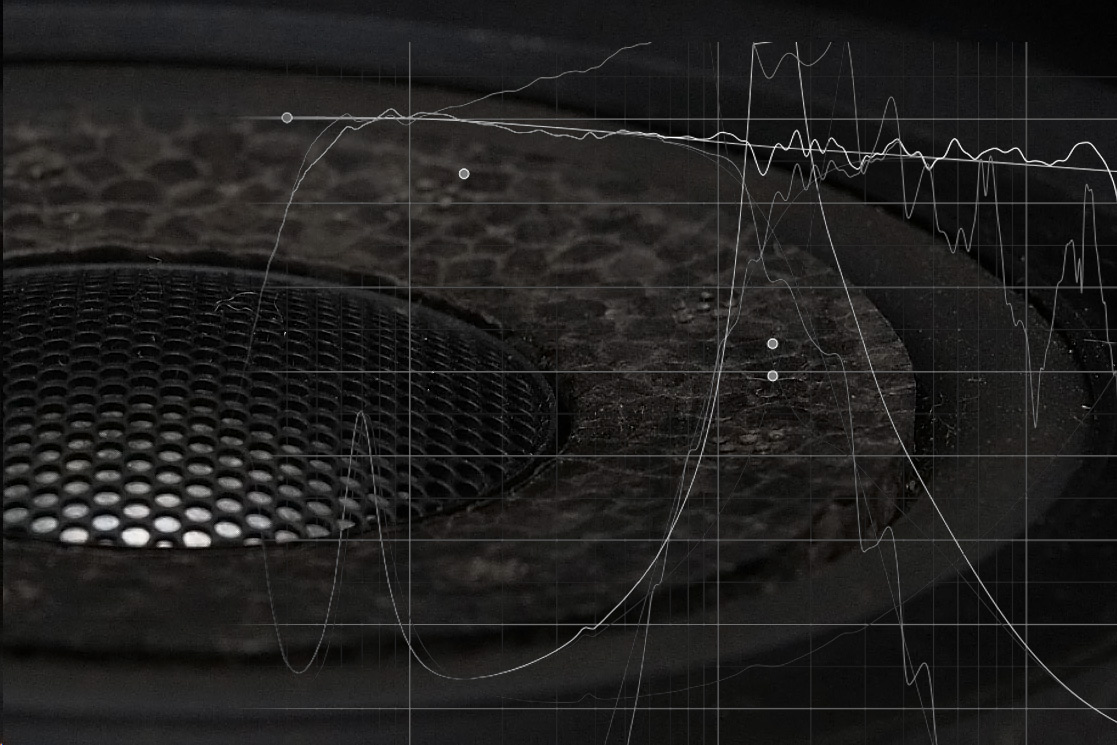

XS01 Xover Studio is quite remarkable as it does what every well-seasoned electronics engineer does – it guesses. Intelligently. It learns by guessing, and finds the most optimal (yet cheap) way of delivering required performance from any given circuit. A million times per second.
So, what is it?
- You set the target response of the circuit (by drawing real-world biquad filters on the chart).
- You draw approximate circuit that might implement the desired target response (without component values, as they are nearly impossible to find out without guesswork)
- … yada yada …
- You get the component values that implement desired target response! Magic!
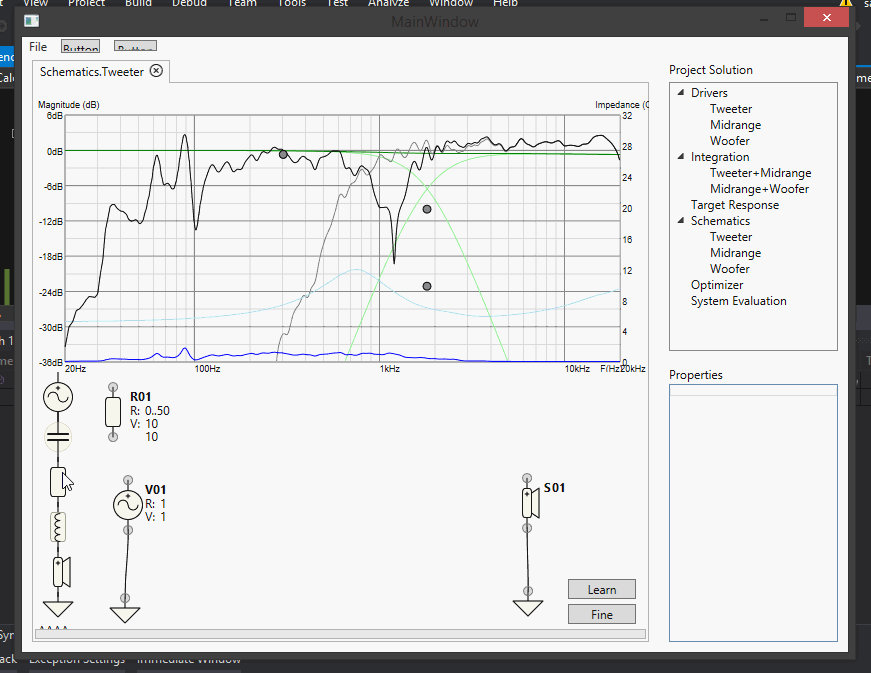
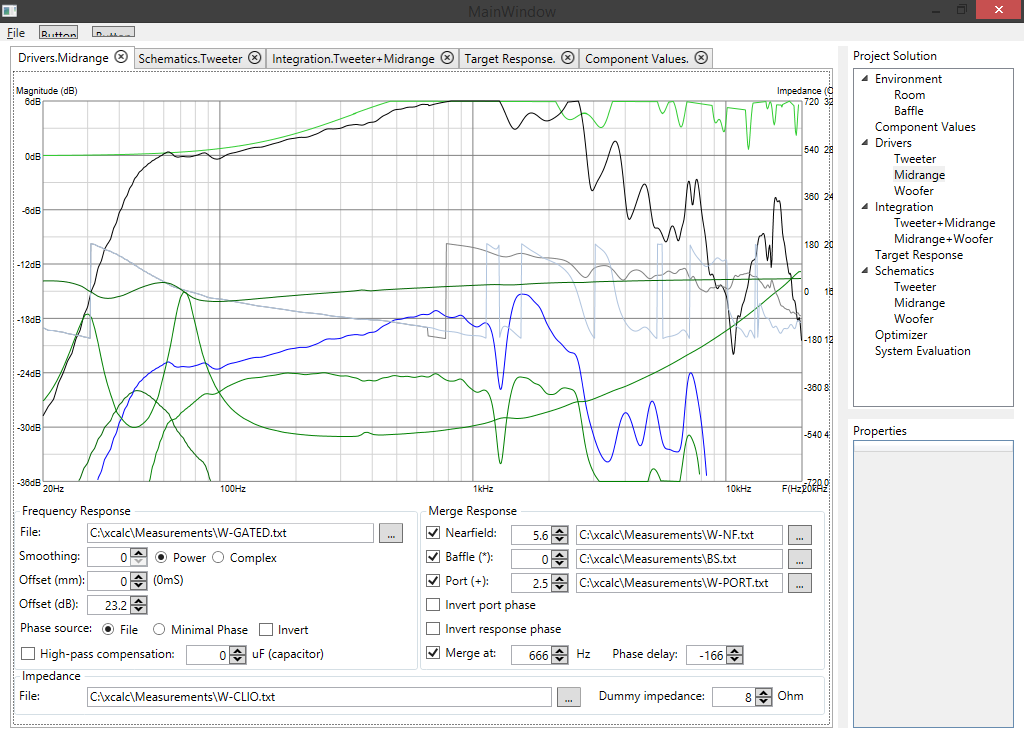
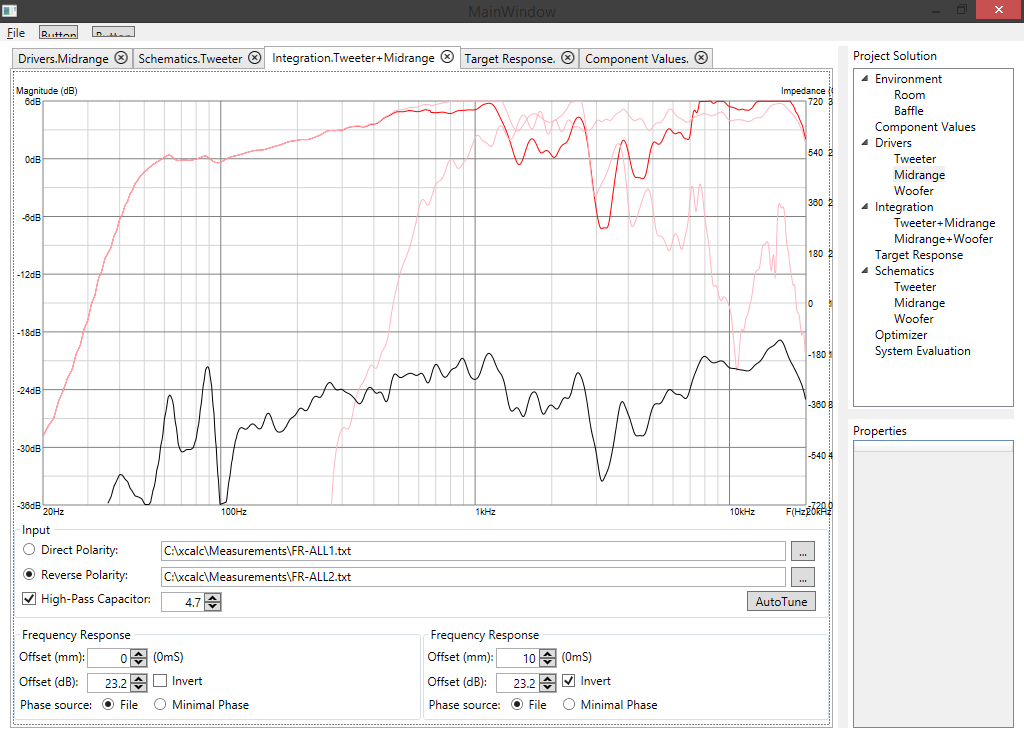
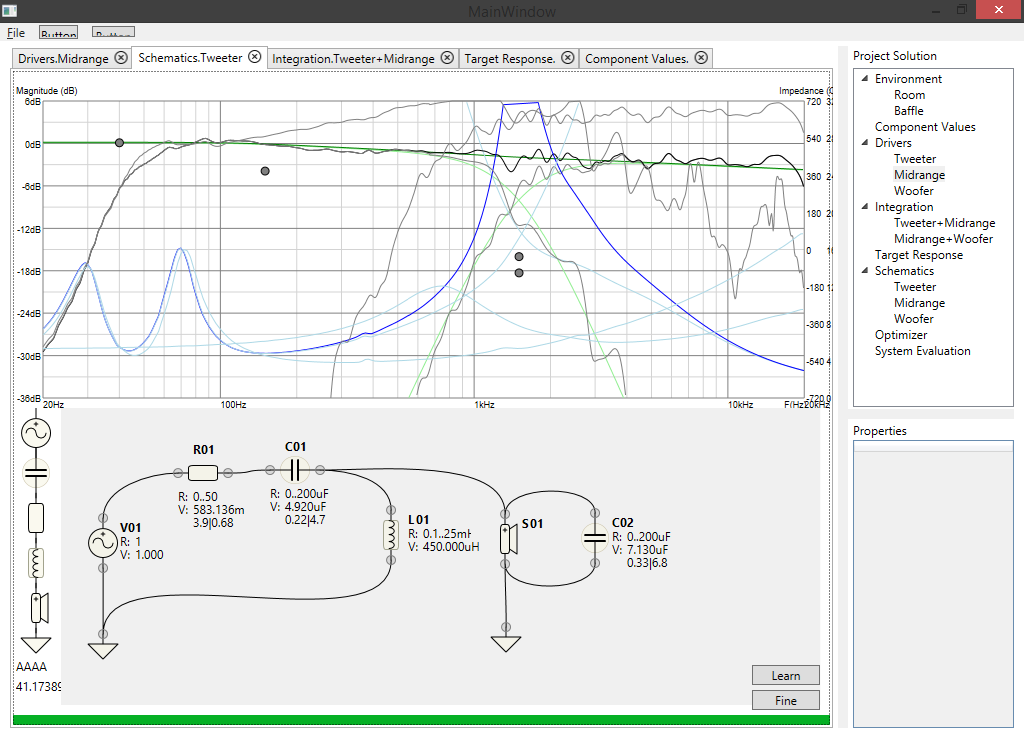
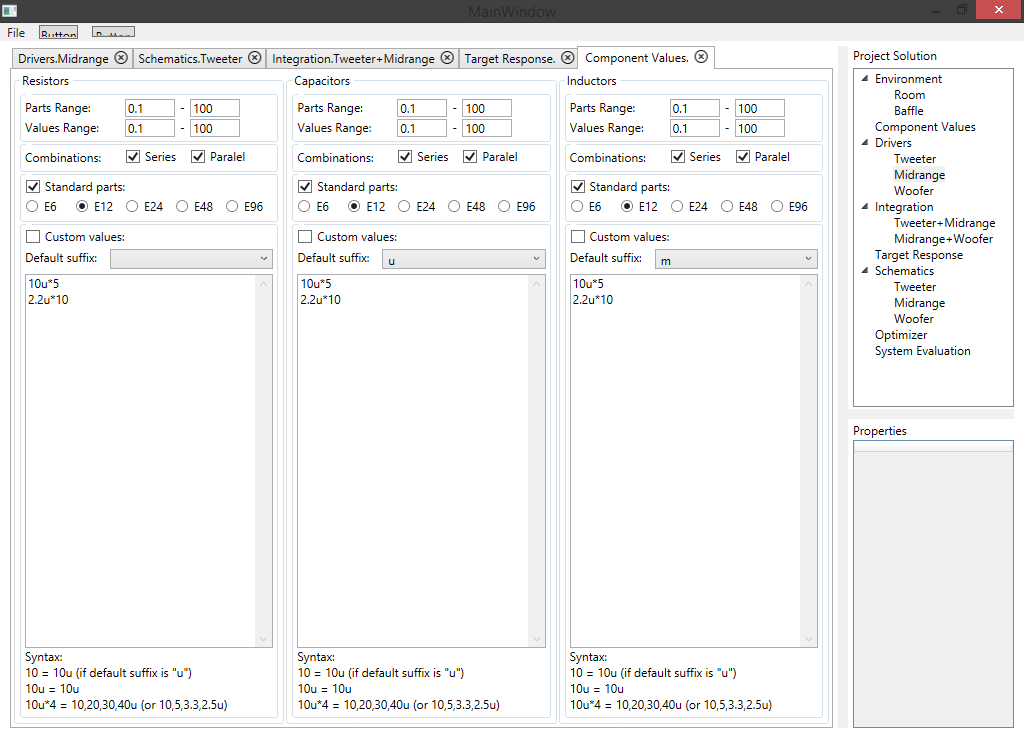
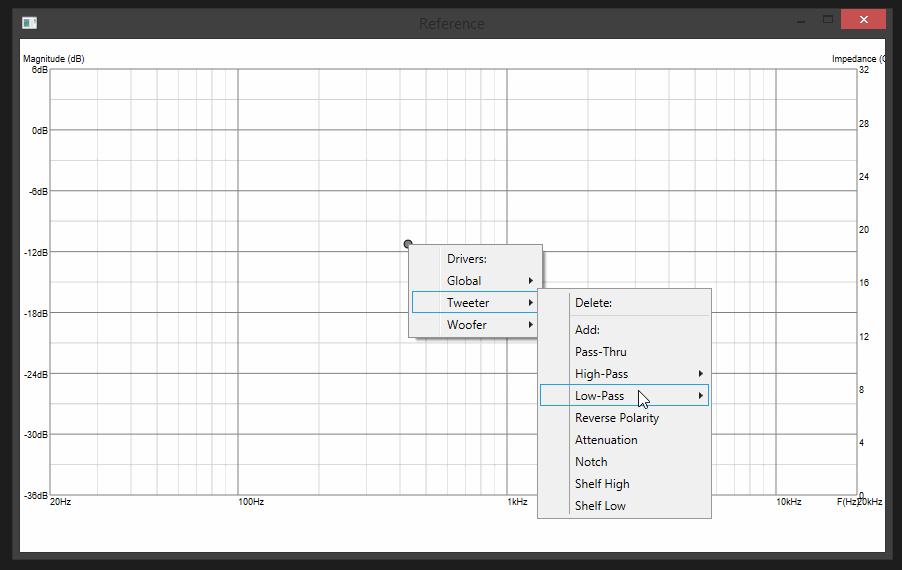
Import and preprocessing of your measured frequency and impedance data:
You can measure everything, but these won't sum up correctly if your time base for responses ain't the same. We've got you covered with automatic time alignment feature - all you have to do is make 2 extra measurements of drivers, one in-phase, and another one out-of-phase. The software will adjust levels, phase/time delay as well as phase polarity to match supplied driver responses to their simultaneous operation, as well as compensate used high-pass filter.
What do you want to get? Draw it on the chart with a mouse - using common signal processing entities such as low/high-pass, low/high shelving, notch, peak as well as (important) skew filters. Both for global response as well as for individual drivers. It's a matter of dragging "control points" on the chart - everything computes as you change parameters of these filters.
Easy, sleek schematics editor, with real time display of simulated circuit and it's sum with the rest of the system. The wires won't disconnect when you rearrange parts :) You can change component values simply by dragging them with mouse's right button!
In the schematics, there is a button named "Learn". It actually learns the drawn circuit, it's capabilities and responses, and matches component values of whole circuit to user-drawn target response. And, if you happen to change the target response by moving these control points, or modify it somehow, it recalculates the whole circuit's component values to match your desire. In real time. Like, real-real-time.
DSP filter synthesis, FIRs, import and export of miniDSP settings, as well as conversion of filters between DSP, analog and passive domains.